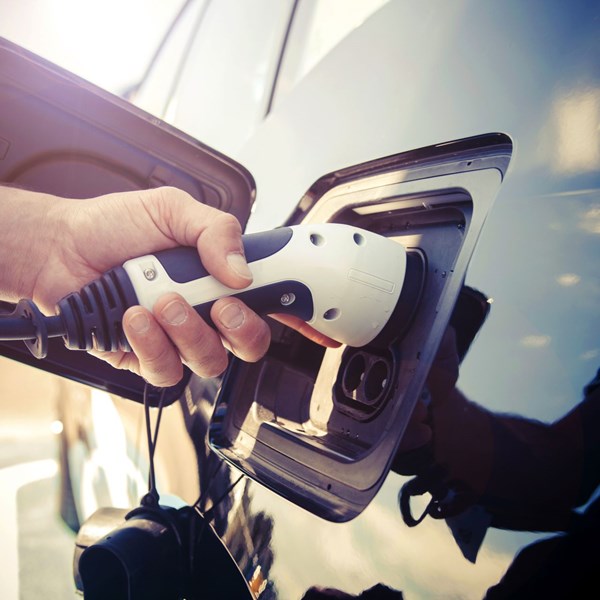As the automotive sector transitions to an electrified future, the phase-out of the internal combustion engine (ICE) seems decided. Recent developments concerning hydrogen, however, indicate that the ICE may have a longer lifespan than first anticipated.
WHERE HAVE HYDROGEN INTERNAL COMBUSTION ENGINES COME FROM?
The use of hydrogen ICEs is largely motivated by the absence of CO2 as a combustion by-product. The idea, nonetheless, originates in 1806 with the demonstration of a de Rivaz engine powering an automobile and running on a mixture of hydrogen and oxygen.
The relative technological maturity of the internal combustion engine is also seen as an advantage for hydrogen ICEs as a cleantech solution. In particular, adapting an existing engine technology may have fewer (and/or less challenging) technical hurdles to overcome compared to the development of an entirely new engine technology and its supporting infrastructure.
Besides its green credentials, modern interest in the hydrogen ICE stems from competing views as to what technology can decarbonise the automotive and transport sectors alongside a recognition that any one technology may not be able to meet all the sector’s demands.
IMPROVING THE ENVIRONMENTAL CREDENTIALS OF HYDROGEN ICEs
While hydrogen is a cleaner fuel than for example diesel, hydrogen ICEs are not pollutant free. The combustion of hydrogen with air produces nitrogen oxides (NOx), the emissions of which are widely regulated.
In light of this, Ford was recently granted US patent no. US11248542B2 (US ‘542), the disclosure of which generally concerns a hydrogen combustion engine that can be operated in an effective manner with low nitrogen oxide emissions into its surroundings.
By way of background, US ‘542 teaches that the combustion air ratio λ corresponds to the engine load, such that an alteration of the engine load can be met with an alteration of the quality of the fuel-air mixture.
In the range of 1<λ<2, the fraction of nitrogen oxides formed by hydrogen combustion may be relatively high, and these may not be reduced into compounds that contribute less to greenhouse emissions.
To overcome this problem, US ‘542 teaches a method of operating a hydrogen combustion engine with a first combustion air ratio with a λA≤1 during conditions of higher torque demand, operating the hydrogen combustion engine with a second combustion air ratio with a λB≥2 during conditions of lower torque demand, and switching from the second combustion air ratio to the first combustion air ratio in response to a torque demand increasing. The switching step comprises advancing an intake valve opening to increase exhaust gas recirculation (EGR) flow to the combustion chamber as a fuel injection amount is increased.
In this way, higher NOx output conditions may be avoided - the recirculated exhaust gas inter alia displaces the oxygen in the combustion chamber - and NOx output reduced overall.
The technical contribution of US ‘542 may also provide a desired torque with reduce noise, vibration and harshness:
“The technical effect of adjusting the valve operation is to increase EGR flow as the engine switches from a lean operation to a rich operation is to change a NOX formation point to lower lambda values closer to the rich operation such that the switch decreases or avoids NOX formation. At the switch point from second to first operating state, the EGR is increased to dilute the charge so that the engine delivers the same torque as the lean lambda operation point. By doing this, the valvetrain may cycle from the first operating state to the second operating state or vice versa in a jerk-free manner.”
COULD THE ICE BE A COMPLEMENTARY SOLUTION TO ELECTRIC VEHICLES?
In addition to Ford, a group of Japanese companies - Denso, Kawasaki Heavy Industries, Subaru, Toyota, Mazda, and Yamaha - are working to expand fuel options for ICEs. The objectives of this group include exploring the use of hydrogen engines in two-wheeled and other (e.g., land or sea) vehicles and continuing to race using hydrogen engines.
Such initiatives shed light on the potential (at least in the short term) limitations of electric vehicles, e.g., those powered by batteries or fuel cells.
For example, batteries can be seen to present charging and reliability challenges where heavy-duty equipment is used in remote, often harsh locations. The added weight of a battery array to a vehicle may also curtail vehicle performance.
IS THIS AN OPPORTUNITY FOR UK-LED INNOVATION?
While we have focused on hydrogen ICEs up to this point, a November 2021 study by the UKIPO found a substantial increase in worldwide patenting activity of hydrogen power between 2001 and 2018, with Toyota the most prolific filer. As such, internal combustion engines - fuelled by hydrogen - could be here to stay.
The opportunity for the UK to make its mark on the global hydrogen stage was recently argued for by Ian Constance, CEO of the Advanced Propulsion Centre (APC) [1]. While framed against the UK’s leadership in battery cells research in the 1980s and 90s, of relevance to this article is the observation:
“[Most] UK manufactured vehicles are SUVs and 4x4s or utility vehicles, off-highway vehicles, light commercial vans and prestige marques - all types of vehicle where power, utility, range and off-road capability are important and could benefit from a hydrogen powertrain.”,
Ian Constance adding:
“But heavy-duty applications - public transport, marine, rail and air - will need a different solution. Hydrogen will play a part, the UK could have a key role - and that means jobs and economic growth.”
A further component to hydrogen leadership, in our view, is innovation.
To give hydrogen innovators the best chance to obtain a position of leadership, a portfolio of strong IP rights is likely vital. Not only can such rights help to provide a competitive advantage over competitors through enforcement, but also to help attract further investment, through which the position of leadership may be maintained.
To find out more about how IP can help you create commercial value from your hydrogen innovations, feel free to contact any of our fuel cells and hydrogen team.
FURTHER READING
- This opportunity can also be viewed in light of the government’s August 2021 hydrogen strategy, which among other ambitions is for 5GW of low carbon hydrogen production capacity by 2030 for use across the economy. Our insight piece on that strategy can be found here.







